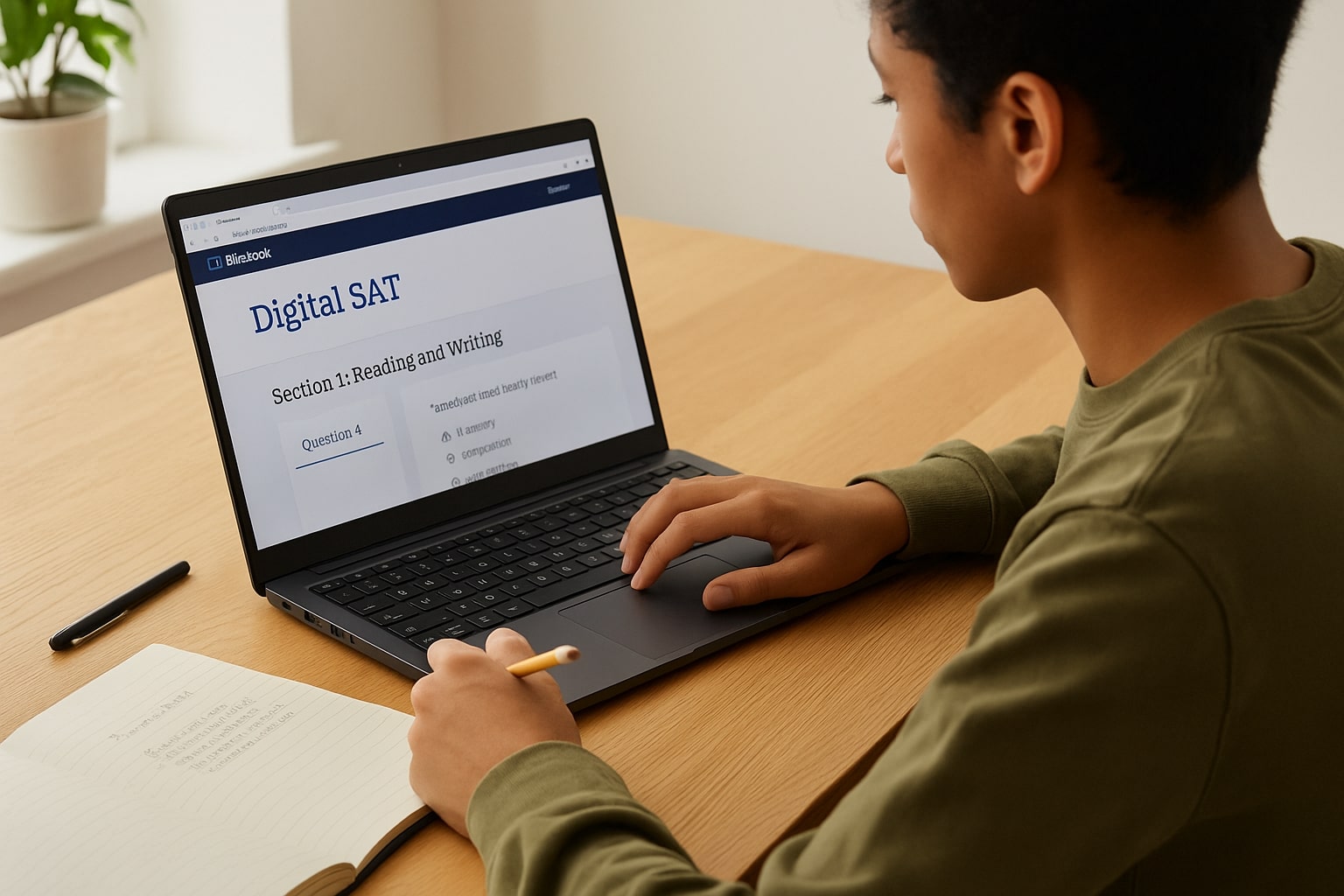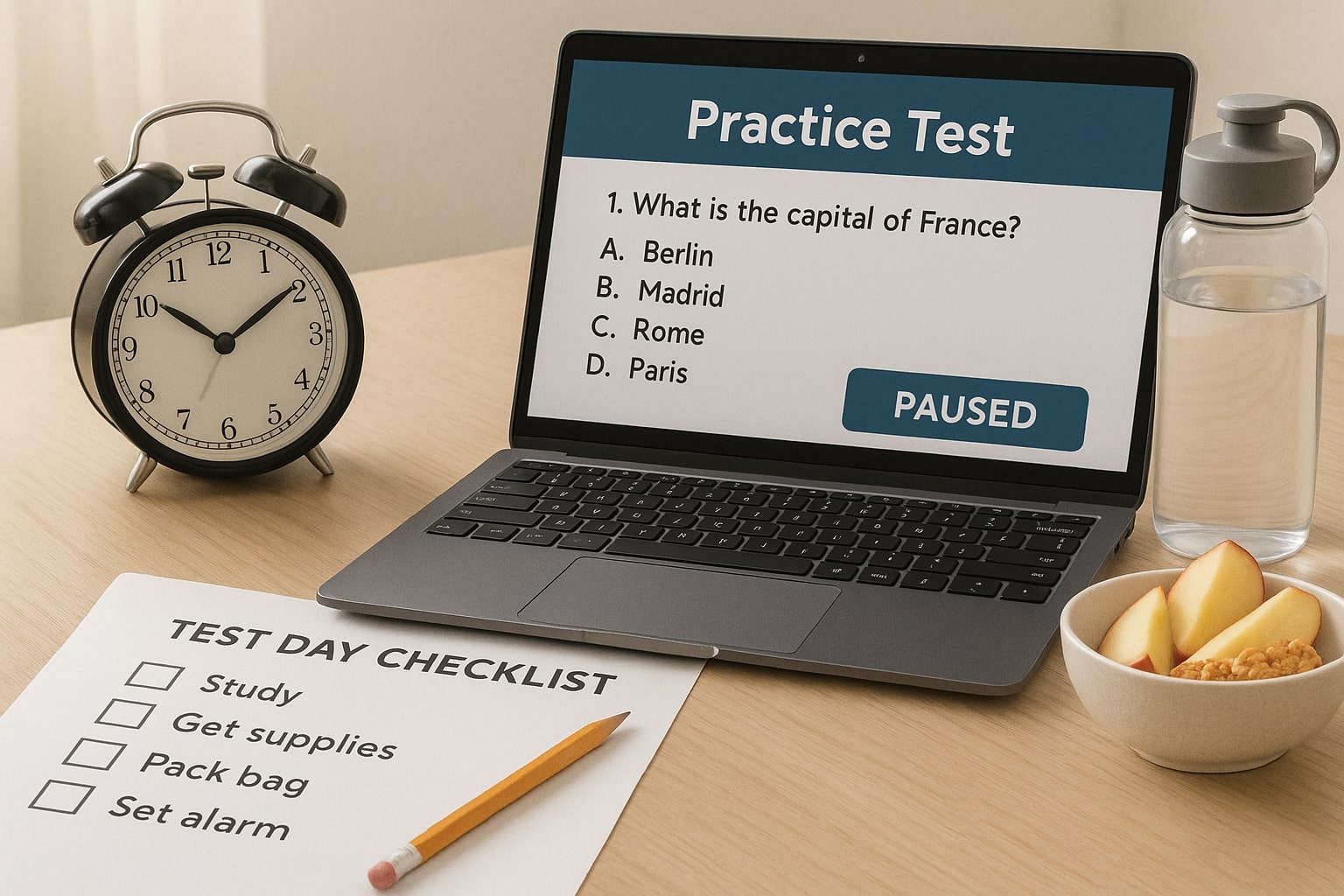The Long Game: Why Long-Term SAT Preparation Feels Different — and Why That’s Good
Ask most students what studying for the Digital SAT feels like and you’ll hear two words: marathon and mystery. Marathon, because the best gains usually come from steady, long-term work rather than last-minute cram sessions. Mystery, because the adaptive digital format, the testing app, and the new pacing make the whole process feel unfamiliar at first.
This post is for the students who are committed—those who want a plan that grows with them, who understand that improvement is incremental, and who want the mental tools to stay motivated across months. I’ll walk you through realistic schedules, common emotional bumps, how to structure practice and review, and helpful ways to fold in targeted support like Sparkl’s personalized tutoring when the going gets tough. Consider this a friendly roadmap for a journey that many describe as challenging but also deeply rewarding.
Start with the Why: Define Purpose, Not Just a Score
Total time invested in the SAT is less important than clarity about purpose. Are you studying to boost a specific section? To qualify for scholarships? To get into a particular set of colleges? Your answer determines what your long-term plan looks like.
Here’s why purpose matters:
- Motivation becomes sustainable when tied to concrete goals (a target score, scholarship cutoff, or a timeline for college applications).
- Study choices change: focusing on vocabulary and reading strategies looks different from an intensive math content push.
- It helps you measure progress sensibly—celebrating skill growth rather than punishing yourself over a single practice test.
Quick exercise:
Write down three reasons you want to improve your SAT score. Keep them visible in your study space. When the fourth practice test in a row feels rough, these reasons anchor you back to steady action.
Designing a Long-Term Schedule: A Flexible Year-Long Template
Long-term doesn’t mean rigid. The most effective schedules are frameworks: predictable enough to build habit, flexible enough to adapt around schoolwork, sports, and life. Below is a practical template you can tailor to 6, 9, or 12 months.
| Phase | Duration | Main Focus | Weekly Time |
|---|---|---|---|
| Foundation | 6–10 weeks | Content review and diagnostic tests | 4–6 hours |
| Skill Building | 8–14 weeks | Target weak areas, technique (reading strategies, math problem types) | 6–8 hours |
| Practice & Timing | 8–12 weeks | Full-length adaptive Bluebook practice, time management | 8–10 hours |
| Polish & Test Readiness | 4–6 weeks | Light practice, sleep/health routine, test logistics | 3–5 hours |
That table is a template, not a mandate. If you have six months, compress; if you have a year, spread the phases out. The key is consistency and purposeful adjustments after each diagnostic or practice test.
Practical Weekly Plan: What a Typical Week Looks Like
Here’s a balanced week that keeps momentum without burning you out. If you’re a student balancing school, aim for the lower end of time estimates during heavy school periods and increase in calmer weeks.
- Monday: 60–90 min — Focused content (e.g., algebra review or passage reading strategy)
- Tuesday: 30–45 min — Timed practice set (30-minute reading set or 25-minute math set)
- Wednesday: 45–60 min — Review mistakes, create flashcards or note summaries
- Thursday: 60–90 min — Mixed practice block (both math and evidence-based reading)
- Friday: Rest or light review — 20–30 min, vocabulary or quick question bank
- Saturday: 2–3 hours — Full-length or half-length Bluebook practice (rotate weekly)
- Sunday: 45–60 min — Reflective review; plan next week, coaching session as needed
Why this cadence works
Short daily sessions maintain skill activation; one longer session each week preserves stamina. You’ll also build the habit of immediate review, which is where the most learning happens. If you can, pair a weekly reflection with an accountability partner or a tutor to keep rates of improvement high.
Practice Tests: The Backbone of Long-Term Prep
Full-length practice tests are non-negotiable. They’re less about the single score and more about learning how you respond under test conditions—fatigue, pacing, stress, and the adaptive nature of the Digital SAT. After each test, spend at least twice the test duration reviewing every missed question and understanding not just the right answer but why you were drawn to the wrong one.
How often?
- Early phases: take one every 6–8 weeks to gauge baseline and growth.
- Middle phases: every 3–4 weeks to refine pacing and strategies.
- Final phase: once every 1–2 weeks, tapering off in the final week before test day.
Make Review Active: Don’t Just Mark Answers—Fix the Process
Passive review—reading the explanation and moving on—won’t produce deep change. Use active methods:
- Explain the solution out loud or write a short paragraph teaching it to someone who hasn’t seen the problem.
- Create a two-column error log: “What I thought” vs. “What actually happened.”
- Track patterns: conceptual gaps (algebra topics), timing issues (spending too long on passage 1), or careless errors (slips in arithmetic).
Example error log entry
Question: Word problem with percent increase. What I thought: Used simple difference over original value, but misread final value as original. What actually happened: Misread variable; correct approach would set up equation and isolate variable. Fix: underline key quantities and write a one-sentence plan before solving.
The Emotional Side: Motivation, Burnout, and Momentum
Long-term prep is as much emotional as it is intellectual. You need strategies for staying motivated and for maintaining mental energy when progress plateaus.
Practical emotional strategies
- Micro-goals: aim for small, measurable wins (e.g., “improve accuracy on hard geometry by 10% this month”).
- Reward system: non-academic rewards for meeting weekly goals—coffee with a friend, a favorite show episode.
- Scheduled breaks: plan light weeks after heavy academic periods to avoid burnout.
- Reflective journaling: once a week, write 200–300 words about what’s improving and what feels stuck.
When stress spikes, the most helpful move is to simplify: cut practice time nearly in half for a week and replace it with light, confidence-building tasks like question-of-the-day exercises or review of solved problems. You’ll return refreshed and more efficient.
Using Data Smartly: What to Track and Why
Long-term improvement happens when you track the right things, not everything. Focus on five indicators:
- Section accuracy by question type (evidence, command of evidence, algebra, advanced math, functions, etc.).
- Average time per question by passage or problem set.
- Types of careless errors (calculation, misreading, skipping steps).
- Practice test score trends (not single-test variance, but moving averages).
- Stamina metrics—how your accuracy shifts across the test from start to finish.
Use a simple spreadsheet or notes app and update after every major practice session. Trends are far more meaningful than any single score.
How and When to Bring in Personalized Help
Long-term prep doesn’t mean you have to do it alone. If you’re plateauing or juggling time, personalized tutoring can accelerate progress. High-value moments to get help:
- After two practice tests with minimal score improvement—an expert can diagnose hidden issues.
- If you have irregular school obligations (AP season, varsity season) and need a flexible study plan tailored to your calendar.
- When you want accountability and a structured rhythm—regular 1-on-1 sessions create momentum and targeted fixes.
For many students, Sparkl’s personalized tutoring fits naturally into a long-term plan: 1-on-1 guidance helps convert weak areas into strengths, tutors craft tailored study plans around your timing, and AI-driven insights can prioritize the practice that’ll move your score the most. Consider tutoring as an investment in efficiency—less total study time, more targeted gains.
Tech Tips for the Digital SAT: Practice with the Interface
The Digital SAT’s structure and the Bluebook testing app change some test-day elements—device familiarity, on-screen tools, and the adaptive sectioning. Practice in the Bluebook environment as much as possible. Familiarity with the testing app removes an unnecessary layer of anxiety and allows you to focus on content and pacing.
What to simulate in practice
- Take at least a few full-length practice tests in the official app so you’re used to digital navigation.
- Practice with the built-in calculator for math sections to mirror the test environment.
- Polish on-screen annotation habits: underlining, flagging, and note-taking without paper reliance for the sections where allowed.
Sample 6-, 9-, and 12-Month Checklists
Below is a condensed checklist you can adapt depending on how much time you have before test day. Use it as a weekly progress compass.
| Timeline | Key Weekly Actions | Milestone to Achieve |
|---|---|---|
| 6 months | Weekly targeted practice, biweekly full-length test, focused review | Solid baseline + 1–2 mini-targets (e.g., +30 points in Math) |
| 9 months | Monthly diagnostic, skill cycles (3–4 weeks per skill), tutor sessions as needed | Consistent score growth and improved timing |
| 12 months | Slow build: content depth, many practice tests, stamina training | Robust improvements across sections and test-day confidence |
Stamina Training: Simulate the Test, Not Just the Questions
Stamina training is the secret many students overlook. It’s not just about solving problems quickly; it’s about maintaining focus and accuracy after two hours of sustained mental work.
- Start with half-length practice sessions, then gradually increase to full-length in the same time blocks as your test day.
- Practice under realistic conditions: quiet room, same device, similar chair, and scheduled breaks (if applicable) to build test-day resilience.
- Nutrition and sleep: treat practice days like test days—no junk food binging or all-nighters. Sleep matters more than last-minute cramming.
When Scores Don’t Move: Troubleshooting Plateaus
Plateaus are normal. Here’s how to troubleshoot them:
- Check novelty: are you still doing the same kinds of practice? Introduce new question banks or different problem sets.
- Change tempo: swap a content day for a timing day, or vice versa. Variety can break through stagnation.
- Seek targeted feedback: a tutor or coach can catch patterns you miss (e.g., misinterpretation of evidence-based questions).
- Audit your review process: are you truly learning from mistakes, or just cataloging them? Move from passive to active review.
Real-World Context: Balancing Life, School, and SAT Prep
Most students must balance long-term prep with demanding school schedules, extracurriculars, and social life. That’s okay. In fact, a well-paced long-term plan will make the SAT less intrusive on your life.
Things that help:
- Block scheduling: set fixed weekly time windows that are non-negotiable, even if short.
- Integrate prep into schoolwork: use class assignments that overlap with SAT skills (e.g., algebra homework as targeted math practice).
- Communicate with coaches and teachers: during heavy seasons, reduce weekly SAT time without stopping practice entirely—consistency over intensity.
Final Countdown: The Last 3–6 Weeks Before Test Day
Taper. You want freshness, clarity, and confidence at the finish line. Reduce heavy content study; focus on light practice, review of common trap questions, strategy tweaks, and test logistics (device readiness, Bluebook setup, ID and test-day checklist).
- Do 1–2 full-length Bluebook tests, but not back-to-back—allow recovery time for review.
- Finalize test-day plan: travel time, food, sleep schedule.
- One week out: stop introducing new heavy content. Concentrate on confidence work and practicalities.

Parting Advice: Make the Journey Yours
Long-term Digital SAT preparation is less a race against others and more a personal development project. It asks you to get curious about your thinking patterns, patient with your pace, and intentional about your habits. The transformation you experience—stronger focus, better time management, clearer reasoning—will serve you beyond the SAT.
If you want help stitching this roadmap into a plan that fits your calendar, Sparkl’s personalized tutoring offers a natural complement: 1-on-1 guidance to diagnose sticking points, tailored study plans that respect your school life, expert tutors who translate feedback into small, actionable changes, and AI-driven insights that prioritize the practice that moves your score most efficiently. When you pair long-term commitment with targeted support, the results compound fast.
One last note
Don’t let one practice score define you. Use each test as data, each error as a lesson, and each week as a building block. Keep a light touch, stay curious, and remember that steady, patient work often beats frantic intensity. You’ve got time and potential—play the long game, and you’ll be surprised at how far you go.
Good luck, and study smart.














No Comments
Leave a comment Cancel